Greetings, fellow homesteaders!
Today, we're diving headfirst into the world of essential oil extraction techniques, specifically tailored for those who know the joys of homesteading.
Imagine having your very own essential oil extraction machine for home, all while learning essential oil extraction methods that align with the homesteading spirit.
We'll be focusing on a trusty steam distillation method to create lemon balm essential oil - a valuable addition to any homesteader's toolkit.
DIY Essential Oil Extraction for Homesteaders
As homesteaders, we take pride in making the most of what we have, from the herbs we grow in our backyard to the resources we use.
Instead of reaching into our pockets to buy costly essential oils, let's tap into our homesteading skills and create our own, ensuring they're pure, organic, and made with love.
A Homesteader's Essential Oil Extraction Machine for Home
Now, I understand the importance of a budget.
That's why I didn't invest in an expensive essential oil extraction machine for home.
For approximately $100, I got myself a working still.
It might not be specialized for essential oils, but it does the job beautifully.
Here is a really short video I did showing the process of distilling mint.
Setting the Stage: Steam Distillation for Essential Oil Extraction
Let's talk steam distillation - the heart of our essential oil extraction technique.
Here's how we set up our trusty steam distiller for essential oil extraction, tailored for homesteaders:
- The Hardware Cloth Setup: We used hardware cloth to create a square block at the bottom of the still and a round "basket" atop it. This simple yet effective setup allows more room at the bottom for water - a homesteader's best friend in the distillation process.
- Elevating the Plant Material: Our goal here is to elevate the plant material above the water. This clever setup ensures that when we heat things up, steam flows through the plant material and rises into the copper tubing. From there, it drips down into a trusty glass jar - a homesteader's solution.
Hydrosol and Essential Oil: Precious Yield for Homesteaders
Now, here's the magic.
The liquid that drips down isn't just essential oil; it's a combination of hydrosol and essential oil.
While we'll need to separate them, both are incredibly valuable.
Hydrosol has its own set of benefits, but today, we're focusing on that precious essential oil.
Mastering Lemon Balm Oil Extraction: A Homesteader's Guide
Let's move on to our star player: lemon balm.
If you've ever grown this aromatic herb on your homestead, you know it can take over.
So, with an abundance of lemon balm in hand, we're ready to embark on the journey of making lemon balm essential oil - a true homesteader's delight.
How to Make Lemon Balm Essential Oil: A Homesteader's Technique
Here's a detailed breakdown of our lemon balm essential oil extraction technique, designed with homesteaders in mind:
- Wilt the Plant Material: Allow the lemon balm to wilt slightly; it helps essential oils surface.
- The Hardware Cloth Block: Place the square hardware cloth block at the bottom of the still.
- Water Matters: Fill the still with water, leaving about ½ inch from the top of the block. Water is your ally in this homesteading adventure.
- Plant Material Placement: Add your lemon balm plant material (we used both stems and leaves) into the wire basket.
- The Wire Basket: Put the wire basket on top of the square block. This setup is crucial for steam distillation.
- Sealing the Deal: Secure the lid on the still; we want to trap all that fragrant steam.
- Collecting the Liquid Gold: Position the glass jar so the copper tube fits inside it, and cover the jar's top with aluminum foil. This prevents essential oils from evaporating.
- Cooling System: Ensure there's ice-cold water in the submersible pump's bowl; it's essential for condensing the steam.
- Fire It Up: Plug in the submersible pump and start the stove. Bring the still temperature up to 209 degrees Fahrenheit. We recommend a low heat setting.
- Monitor the Drip: Keep an eye on the liquid dripping from the copper tubing. When it slows down or matches the amount of water you put in the still, it's time to turn it off.
- Cool Down Naturally: Let the still cool down on its own time.
- Harvest Time: Remove the lid and the spent lemon balm plant material - it's compostable, perfect for a homestead garden.
- Repeat or Conclude: If you have more lemon balm to distill, add water, fresh plant material, and start the process again. Otherwise, you've successfully extracted your essential oil.
The Finale: A Homesteader's Lemon Balm Essential Oil Recipe
With your precious lemon balm essential oil in hand, you're ready for a world of homesteading possibilities.
You can make salves, dilute it, or use it as you would any other essential oil or hydrosol.
Just a word of caution: the smell during distillation can be potent and trigger migraines in some people, so consider doing this outdoors on your homestead.
FAQ: Steam Distillation and Lemon Balm
Q: What is steam distillation, and why is it used for essential oil extraction?
A: Steam distillation is a method used to extract essential oils from plant materials like lemon balm. It involves passing steam through the plant material, causing the essential oils to vaporize. These vapors are then condensed back into liquid form, creating the precious essential oil.
Q: Can I use any type of still for steam distillation, or do I need a specialized essential oil still?
A: While there are specialized essential oil stills available, you can absolutely use a regular still for steam distillation, just as we did. It's a cost-effective option for homesteaders.
Q: Is it necessary to wilt the lemon balm before steam distillation, and why?
A: Wilting lemon balm slightly before steam distillation can help the essential oils come to the surface of the plant material, making the extraction process more efficient. It's a helpful step but not mandatory.
Q: How do I know when the steam distillation process is complete, and it's time to turn off the still?
A: Keep an eye on the amount of liquid dripping out of the copper tubing and compare it to the amount of water you initially put in the still. When the liquid slows down or matches the water quantity, it's a good indicator that the process is done.
Q: What's the difference between hydrosol and essential oil, and how can I use them both?
A: Hydrosol is the aromatic water that's collected along with the essential oil during steam distillation. It has its own unique benefits. You can use hydrosol as a facial mist, in homemade skincare products, or as a gentle room spray. Essential oil is more concentrated and versatile; you can use it in salves, diffusers, or for aromatherapy.
Q: Does steam distillation smell strong, and can it trigger migraines in some people?
A: Yes, the smell during steam distillation can be potent, especially if you're distilling a fragrant herb like lemon balm. Some individuals are sensitive to strong scents and may experience migraines. It's advisable to do the distillation outdoors if this is a concern.
Q: Can I use steam distillation to extract essential oil from other herbs besides lemon balm?
A: Absolutely! Steam distillation is a versatile method that can be used for various herbs and botanicals. It's a fantastic way to harness the aromatic and therapeutic properties of your garden's treasures.
Q: What can I do with the leftover plant material after steam distillation?
A: The spent plant material is compostable, making it an eco-friendly byproduct of the distillation process. You can return it to your garden as nutrient-rich compost to nourish your plants.
Q: Can I make essential oil blends using lemon balm essential oil, and if so, what are some good combinations?
A: Yes, you can create custom essential oil blends with lemon balm as a base. It pairs wonderfully with lavender, peppermint, and eucalyptus for a refreshing and soothing blend. Experiment and find your favorite combinations.
Q: Is steam distillation a safe method for extracting essential oils at home?
A: When done correctly, steam distillation is a safe method for extracting essential oils at home. However, it's essential to follow safety precautions, such as ensuring proper ventilation, using heat-resistant equipment, and being cautious with hot surfaces.
There you have it, some common questions and answers about steam distillation and lemon balm.
It's an exciting and rewarding process for homesteaders looking to make the most of their aromatic herbs.
If you have more questions or want to share your own experiences, feel free to join the conversation!
Potpourri And Natural Fragrance Extraction
How To Preserve The Scent Of Lilacs
Do you love the lilac scent? Learn how to preserve the scent of lilacs yourself. You can use the fragrance extraction in homemade bath and body products.
How To Make Lilac Potpourri
Learn how to make lilac potpourri using flowers from your own garden. Also learn how to dry the flowers, refresh the scent and make the potpourri last.
How To Use Hydrosols
Many natural skin products contain hydrosol instead of essential oil. Learn how to use hydrosols in your everyday life plus find out where they come from.


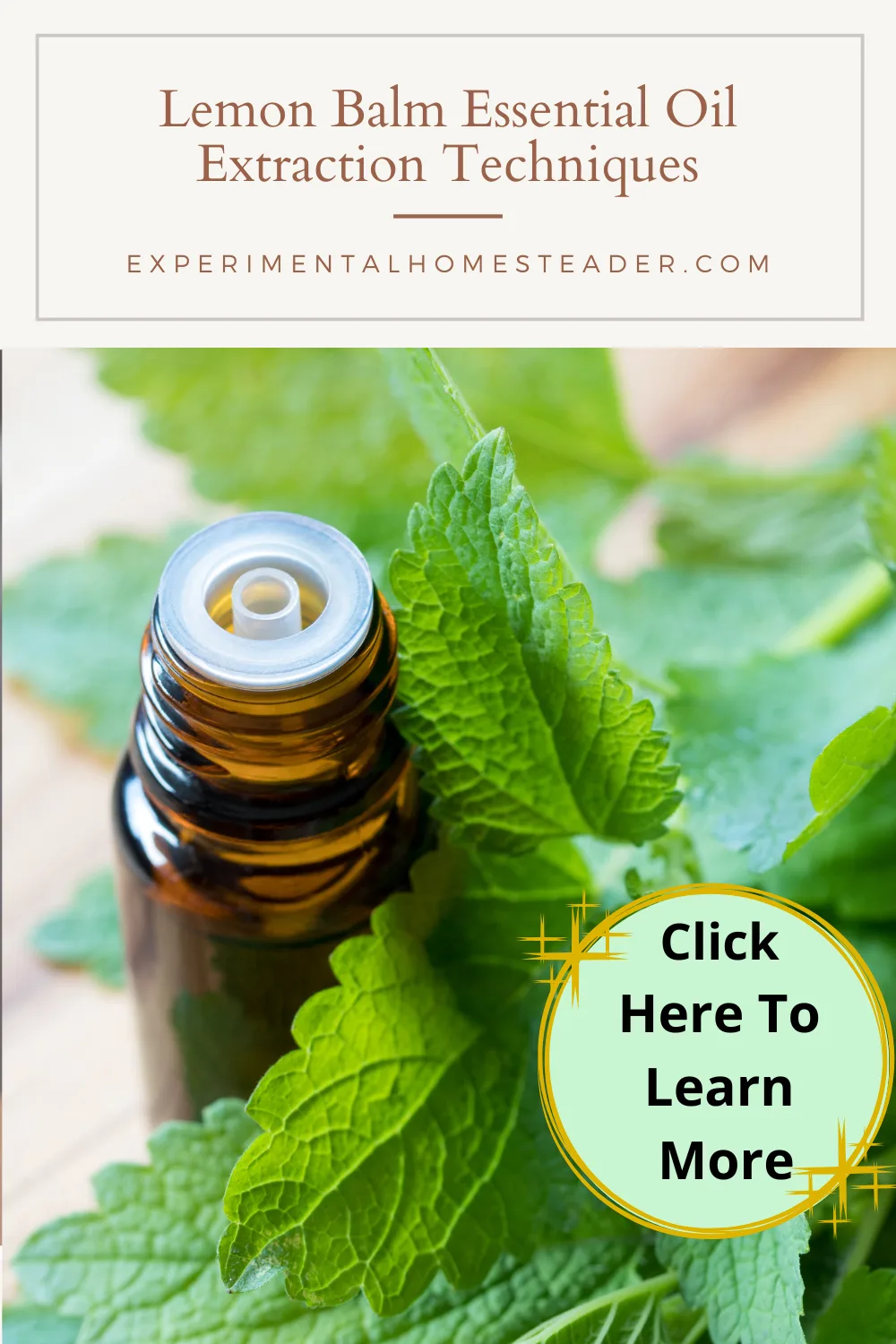

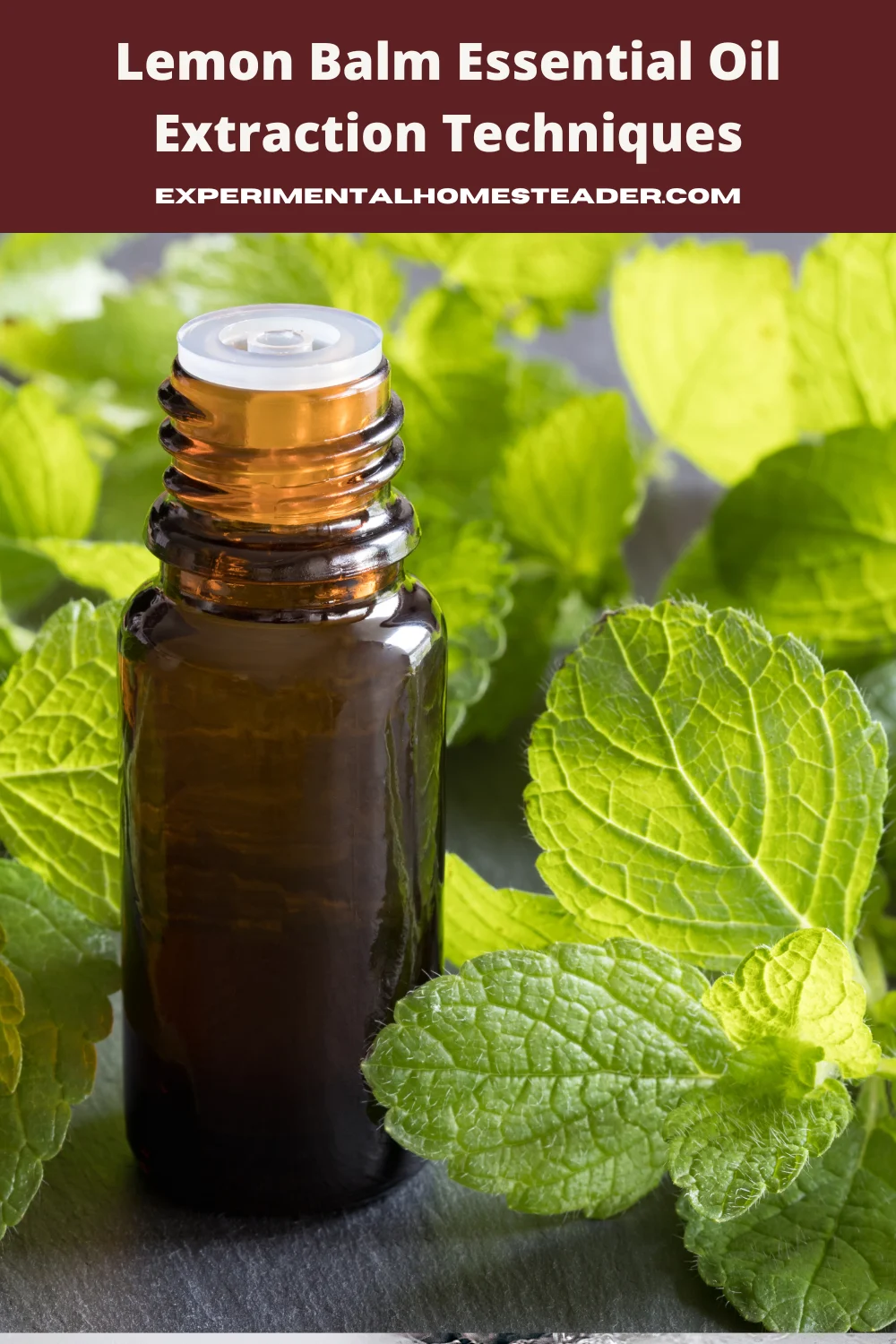

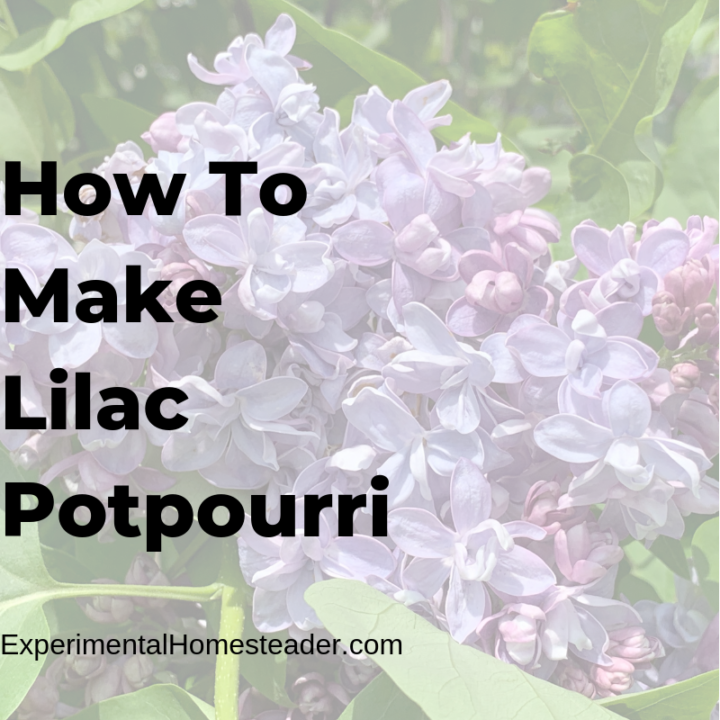
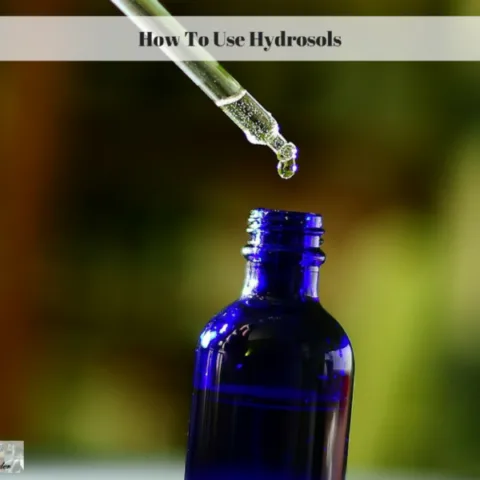
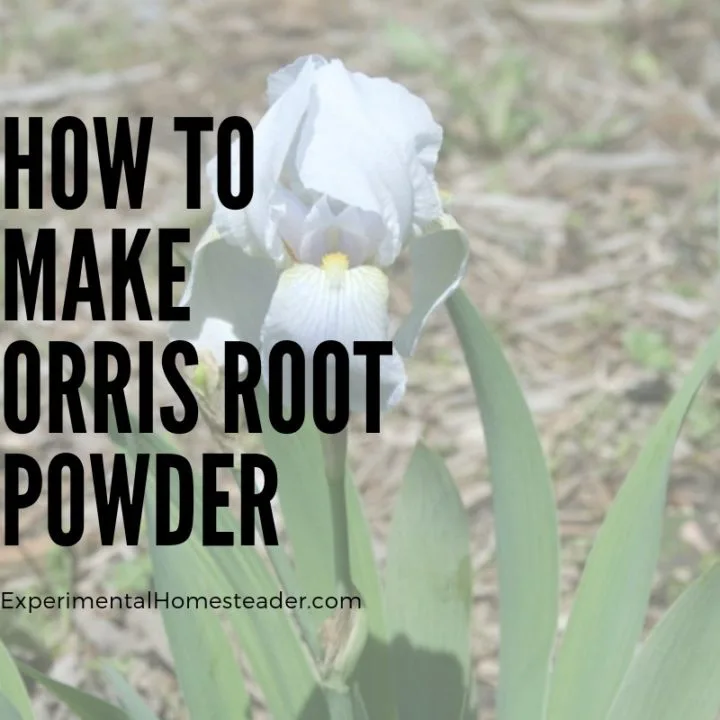
Mark
Saturday 11th of April 2020
Hi, Do you know what the weight to oil ratio is? For example would you weigh the plant material then measure how much oil say for example 1KG of plant material produces?
Sheri Ann Richerson
Wednesday 3rd of June 2020
Hi, I do not know the oil ratio of what I make. It depends on many factors such as which plant material you are using and what amount of oil is in the actual plant. For example, plants harvested right after the dew dries tend to contain more oil than plants harvested later in the day because the sun has caused some of the oils to evaporate. If you want to distill a pound of lemon balm (melissa) essential oil, then plan on having at least 6,000 pounds of plant material. Most of us distilling at home for our own use won't have near this amount of plant material nor wish to distill that much essential oil at once. Of course, there are always exceptions.
Carol Spierdowis
Sunday 23rd of July 2017
Have you ever let it just steep in alcohol to get the benefits? I don't have a still.
Sheri Ann Richerson
Monday 24th of July 2017
Hi Carol! I have not done that with lemon balm but I have done it it with Stevia to make an extract. I am sure it would work. I have seen recipes saying you can do that with various herbs. Another option would be to make a homemade wine or other alcoholic product.
Mary C. Overton
Thursday 22nd of June 2017
Enjoyed reading the articles.Explain everything in details.Thanks for sharing.